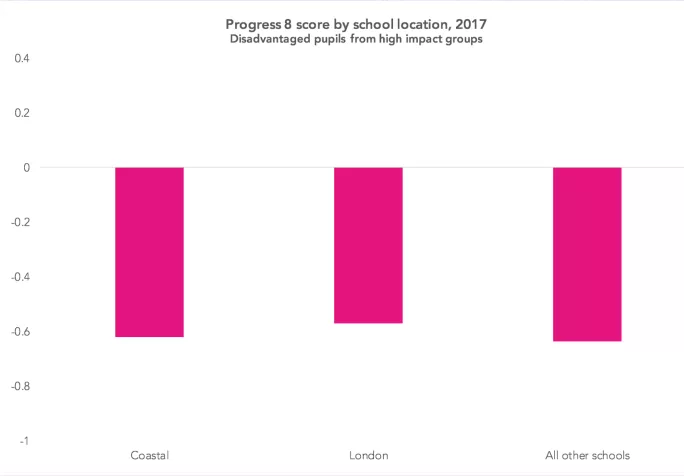Researchers have suggested the underperformance of deprived pupils in coastal schools is “down to demography and not geography.”
FFT Education Datalab has produced a new analysis showing there is little difference between London and coastal schools for pupils in the most disadvantaged group.
It raises questions about Department for Education figures which revealed that poorer pupils achieve lower attainment and progress in coastal areas.
Quick read: Pupils do worse in coastal areas
Coastal schools: Hardest hit by GCSE reforms
Exclusive: Small schools face isolation
Education Datalab’s chief statistician Dave Thomson has revealed that coastal schools have more pupils which are described as being in a “high impact” group where disadvantage has a stronger effect on their results.
A new blogpost says that one in four pupils (25 per cent) in coastal schools are in this category compared with 13 per cent in London and 19 per cent elsewhere.
Education Datalab has previously identified these pupils in the “high impact group” as being mainly white British and black Caribbean.
When comparing the performance of these pupils in coastal areas, in London and elsewhere the figures show little difference.
Mr Thomson warns that attempting to raise school standards by targeting specific geographical areas will not work.
He writes: “As the chart shows, the Progress 8 scores for this group do not show much in the way of geographical variation.
“If there is a London (or even a big city) effect, it doesn’t seem to apply to this group.
“These pupils are found in schools all across the country. This would tend to suggest that any policy to improve outcomes ought to be national in coverage.
“Targeting specific areas based on geography, including opportunity areas, will barely scratch the surface.”
Opportunity areas were created by the previous education secretary Justine Greening as a way of raising standards in 12 of the country’s “social mobility coldspots” which each got a share of £72m.
The Department for Education released data last week showing that disadvantaged pupils achieve the lowest attainment and progress in their GCSEs when they go to isolated rural schools.
The research shows that disadvantaged pupils had the highest attainment and progress when they went to school in major conurbations.





